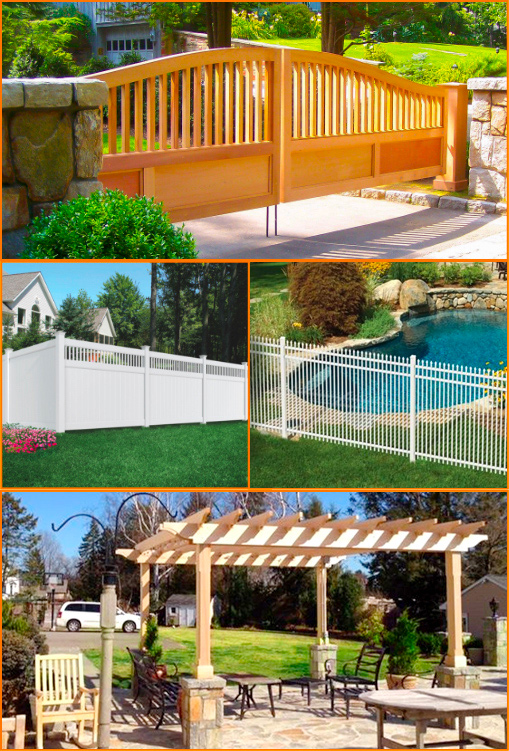Spring is in full swing, and for many, that means it’s time to do some cleaning—in the house and outside. Many homeowners will spend time cleaning up their yards after months of winter weather wreaked havoc on lawns and landscaping. While you’re assessing your yard, take a look at your fence. If it’s in need of a good scrubbing, we have some helpful tips to help it look its best again.
Cleaning Your Wood Fence
Regular cleaning and maintenance can help your fence looking its best for years to come. Cleaning your fence not only helps improve its appearance, it can also help prolong the life of your fence. A buildup of algae, mildew, or mold can lead to rot if you don’t take care to remove them. Deep clean your fence at least once a year to help preserve the look and prolong the life of your fence. (A coat of stain or sealant can also help.)
Many homeowners opt for bleach to clean their wood fence. However, bleach can be hard on nearby grass and other plants. There are a number of eco-friendly alternatives available; your local hardware store may have several options.
To clean your wood fence manually, fill a bucket with warm water and your cleaning solution of choice. Scrub a few boards at a time with a scrub brush or sponge dipped in your solution, then allow the cleaner to sit for 3–5 minutes without drying before rinsing with a hose on low pressure. Repeat this process for the remainder of your fence.
Pro Tip: Allow your fence to dry for at least 24 hours after cleaning it before you sand, stain, or paint it.
If you decide to use a pressure washer to clean your fence, proceed with caution. Use the lowest setting and do not saturate the boards, which can cause problems later. Make sure you hold the wand of the pressure washer firmly with both hands, keeping the nozzle at least three feet away from the surface. To start, rinse a few boards of your fence; start farther away and work your way in as necessary to avoid warping and indents. Once the fence is wet, add the cleaner to the pressure washer’s reservoir according to the manufacturer’s directions. Apply the cleaner from bottom to top, spraying in long, even strokes. Then clean stained areas using a scrub brush. Let the cleaner sit on the surface for 3-5 minutes but do not allow the product to dry on the surface. While you wait for the cleaner to do its job, flush any remaining solution from the pressure washer. Then rinse the boards with clean water on a low setting, working your way up and down. Clean your fence section by section, repeating the process of wetting, cleaning, and rinsing until the entire fence is clean.
Pro Tip: It is best to do this under cooler, non-windy conditions, when the surface you are cleaning is not in direct sunlight. Doing so prevents the cleaner from drying on your surface before rinsing, and the spray doesn’t blow back at you.
Cleaning Your Vinyl Fence
One of the benefits of having a vinyl fence is that it’s relatively easy to clean and maintain. It’s weather-resistant and won’t rot, splinter, warp, or crack like a wood fence. However, a vinyl fence (especially a white one) tends to show dirt and stains more easily than a wood fence. Fortunately these stains are only surface-level since vinyl is non-porous and can be cleaned using a number of different products or methods. Regular cleaning can be done with a garden hose, but tougher stains may require a little more elbow grease.
You may wish to clean your vinyl fence with bleach, although the same caveat that we mentioned above applies here. Additionally, you should never use an abrasive cleaner, melamine, or scouring pad on vinyl fencing as they can scratch the glossy finish of vinyl.
To manually clean your vinyl fencing, follow the same process as that of the wood fence, except choose a sponge, soft-bristled brush, or an old towel or rag to apply the solution to the fence and scrub until clean. You can also use your pressure washer to clean a vinyl fence following the same steps as the wood fence, but again, opt for a less abrasive tool to scrub your fence.
Pro Tip: After you mow your lawn, hose down the fence as soon as possible to prevent algae from feeding on grass clippings that might stick to your fence.

